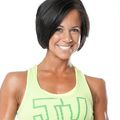From media interviews with popular health and fitness magazines to the classes I teach and clients I train, over the years I have routinely been the following question: “What is the best exercise I should be doing?”
Whether this question is asked in context to a particular goal or a specific body part, my answer is always the same: There is no such thing as “the best” exercise. Clearly, this bold statement doesn’t lend itself well to catchy, clickable article titles, such as “The Only Exercise You Need to Do,” or “The Best Exercise for Better Abs.” But as health and fitness professionals, it’s essential that we help our clients, participants and the public at large understand the truths about exercise that are rooted in factual and practical science-based information, as opposed to extremes and absolutes.
When it comes to exercise (and most things in life), it’s not quite so black and white. As a fitness educator, it is rare that I use words like “always” or “never,” especially with regards to exercise, as there are many variables that influence exercise selection and programming. To help us as an industry (and in turn to help our clients, participants and the public) shift away from an “all or nothing” mentality when it comes to fitness, here are three important factors to keep in mind that shed some light on why there’s no such thing as “the best” exercise.
1. The Enjoyment Factor
From a behavioral perspective, it’s important that movement, in whatever form it is explored, be enjoyable. The more people enjoy the exercise experience, the more likely they are to make physical activity an integral component of their lives, which is ultimately what has the greatest impact on their health and well-being. As such, I would argue that one of the most important, yet sometimes overlooked, aspects that we as health and fitness professionals must consider when exploring exercise options is to choose forms of movement that resonate with the individuals we serve, and that truly support their overall enjoyment and success in the exercise experience.
2. The Unique Needs of Individuals
In addition to enjoyment, we must also ensure that the exercises and movements we incorporate into our classes and training sessions are both safe and effective for our clients and participants. As such, we as health and fitness professionals must have a thorough understanding of the body and how it’s designed to move, from the foundational aspects of joint stability and mobility and an understanding of the interconnectedness of the body as a kinetic chain; to the primary movement patterns we explore both inside and outside of the gym, and the ways in which we add load and variability to movements using an assortment of tools and techniques to improve the health- and skill-related components of fitness.
While our exploration through in-depth areas of study such as anatomy, physiology and kinesiology gives us a greater understanding of the complexity of the human body, along with key training principles and general best practices, it also enables us to recognize that there is not a “one-size-fits-all” approach when it comes to exercise selection and programming. Although we as humans may be of a similar structural design, we each have unique considerations and factors that affect our physical abilities. These, in turn, influence the selection, sequencing and progression of exercises that ultimately will safely and effectively best serve our clients. This may include, but is certainly not limited to: postural deviations, muscular imbalances, limited joint range of motion, chronic conditions, past injuries and varying degrees of experience with exercise.
As such, we can see why it would be problematic to assume that there is one “best” exercise across the board for all individuals, when there are so many variables that must be thoughtfully taken into consideration. With an understanding that each person has unique needs and goals for his or her exercise experience, it is our role and responsibility as health and fitness professionals to appropriately select and tailor movements accordingly. This requires an understanding of program design and progression principles as well knowledge of variables that can be manipulated (i.e., base of support, lever length, points of contact, positioning of the body against gravity, etc.) to meet individuals where they are presently and help them move toward their personal goals and improved health and fitness in a safe, smart and successful way.
3. The Context of Research Studies
While staying up-to-date on current research, it is just as important that we properly evaluate and understand the context of the findings presented, especially as that information influences our exercise selection and program/class design for our clients and participants. Too often, we point to the conclusion of a research study as the basis for justifying our decision to always include a certain exercise in all of the classes we teach or training sessions we lead. For example, over the years ACE has commissioned a number of independent, third-party research studies that have examined the effectiveness of common exercises for various areas of the body and muscle groups (e.g., biceps, deltoids, triceps, glutes). Specifically, these studies have used electromyography (EMG) to test and analyze the level of muscle activation during each exercise examined. As such, the findings of these studies indicate which exercises elicited the most muscle activation. However, the exercises with the highest level of muscle activation is not, by default, necessarily “the best” ones to choose. Rather, this is simply one lens through which to evaluate an exercise. In fact, care must be taken to ensure it is not the only lens through which we are evaluating exercises and making recommendations to our clients.
As discussed earlier, we must keep in mind our understanding of the human body and human movement as well as the unique needs, goals, interests and limitations of the individuals we serve to effectively evaluate the pros and cons of the movement itself, and to ultimately determine how the findings of the research apply to our unique clients and participants. For example, body-weight dips may be an effective exercise for eliciting muscle activity in the triceps, but for a client with instability in the scapulothoracic thoracic region, the potential for injury might outweigh the potential pros of the exercise. Conversely, the traditional push-up may not elicit as much muscle activity in the pectoralis major as the bench press, but given the functional nature of the exercise, its ability to work multiple areas of the body together in an integrated and time-efficient manner, and the accessibility and scalability of the movement, it might be the preferred choice to incorporate in a 30-minute group fitness class where the objective is to create an inclusive experience that helps individuals improve both their fitness and their overall function.
While there are many great exercises and movements out there (and also some not so great ones), and certainly ones that may be more effective than others, at the end of the day there is no single “best” exercise that is perfect for everyone in the same exact form. The more we can leverage our knowledge and expertise to effectively view exercise and other aspects of health and fitness on an extensive spectrum, the more effectively we can educate and empower our clients, participants and the public (including popular media) to do the same.




 by
by 






 by
by